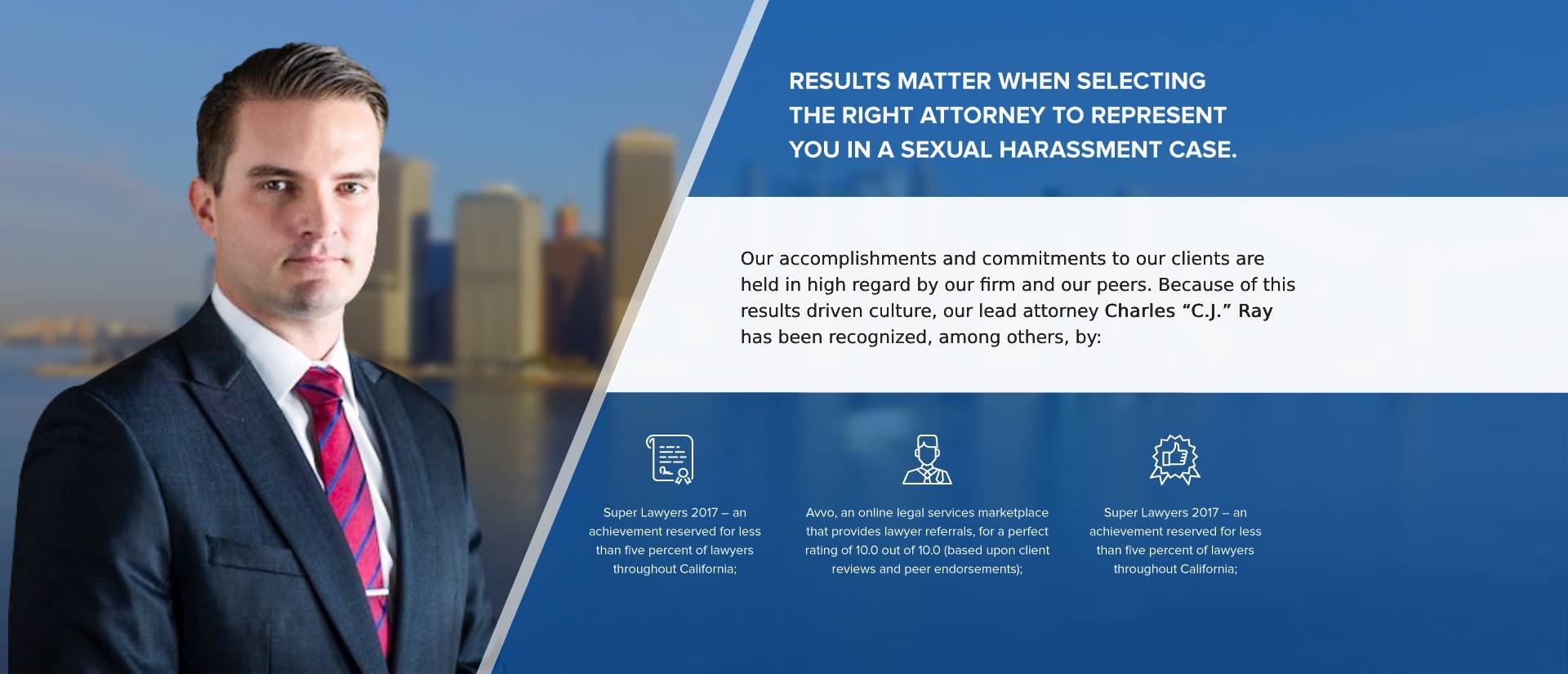California employees usually face hard workplace conditions. Some conditions become so insufferable that a worker must resign. California statute does not always treat an employee's resignation similarly to being fired. Workplace situations and conditions can sometimes be so intolerable and unavoidable that an employee’s quitting becomes termination for legal reasons.
Constructive dismissal is a legal principle that holds companies responsible for making their workers work under insufferable conditions that the workers are forced to resign. This principle is essential in establishing whether a worker may recover further compensation from their ex-employer.
At Sexual Harassment Attorney, we safeguard employees' rights throughout California and can assist you in understanding constructive dismissal in relation to your job situation. Call us now to set up your complimentary consultation.
Defining Constructive Dismissal
Constructive dismissal is also called constructive termination or constructive discharge. It happens when a worker decides to quit their job because their employer has materially violated the employment contract. Put otherwise, it happens when an employer knowingly allows or deliberately creates intolerable work conditions that a worker has no option but to quit.
Constructive dismissal is deemed a kind of wrongful termination. However, unlike traditional firing, whereby the employer takes clear action to terminate the employment relationship, constructive dismissal emerges from a case whereby the employer’s omissions or actions make work conditions intolerable for the worker. In this case, an employee can then file a wrongful termination lawsuit or claim against their employer, provided the employer did not have the right to fire them. The following are examples of the indications that can result in constructive dismissal:
- An employer placing their worker at risk of injury in the workplace. If your employer assigns you to work on a task or project that risks your physical safety, you can use the situation to prove a hostile working environment.
- An employer’s behavior of effectively compelling unreasonable performance assessments upon their workers—an employer consistently providing unreasonably negative or unfair performance reviews without justification can indicate constructive termination.
- The employer either verbally harassing the employee or condoning intolerable work conditions.
- A worker being demoted without cause.
- An employer reducing their worker's job responsibilities or position, or job hours, shifts, and roles without cause. Unreasonable and drastic changes in your working hours, shifts, job roles, et cetera, without valid reasons might contribute to intolerable working conditions.
- Ongoing conduct of intimidating a colleague (or worker if the culprit is the employer) or making belittling comments that violate the state employment law.
- An employer frequently bullying or yelling at their workers.
- An employer harassing an employee or discriminating against them because of a protected characteristic, like disability, age, sex, or race.
- Transfer to a distant branch or department. Your employer can transfer you to a faraway location, making commuting burdensome, as a strategy to compel you to quit.
Note that it is not sufficient that the place of work is disagreeable or unfriendly. It is also insufficient if you do not enjoy working at the job site or office. Consequently, a constructive dismissal claim can only originate from an employer's continuous pattern of clear hostility, discrimination, or harassment. Intolerable work conditions alone are not adequate to demonstrate constructive discharge. Rather, the conditions should be so insufferable that any reasonable worker under the same circumstances would feel forced to resign.
Convert, some courts have ruled that particular acts, like a mere reduction in pay, benefits, or hours, one episode of mistreatment, or promotion of other workers with no evidence of retaliatory or discriminatory motives, do not automatically support a constructive discharge claim.
Since constructive termination cases are very case-specific, you want to consult a skilled employment lawyer if you seek to pursue this kind of claim. A lawyer can help you determine the strength of your case and whether you can pursue a claim or lawsuit.
Many constructive dismissal cases can be difficult to demonstrate since the burden of proof lies with the worker to show that the company intentionally created insufferable working conditions. You should ensure to document any actions, incidents, or alterations in the place of work that led to your decision to quit.
What to Do If You Suspect Constructive Dismissal
The following are the steps you should take if you suspect constructive dismissal:
- Mitigate damages—you want to take reasonable measures to mitigate damages, which might involve seeking another employment position to show you are actively attempting to reduce the financial effect of your constructive dismissal.
- Timely resignation—evidence that you quit immediately after the contractual breach occurred can show a clear link between your decision to quit and your employer's actions.
- Document efforts to resolve—the court will require you to show that there were efforts to address or solve the problems with your employer before resigning. This might entail seeking resolution via internal channels, negotiating changes, or expressing concerns. Records depicting this kind of communication will strengthen your case.
- Collect evidence—to prove that the employer imposed changes without your consent or proper consultation. Gather any communication or records with your employer concerning the changes, witness statements, personal statements, and your professional or emotional distress, et cetera.
- Review your employment contract—thoroughly check your employment contract to find any clauses about working conditions, job duties, or other terms and conditions of employment. That will act as a foundation for determining the employer's breach.
- Document the actions it changes—It is critical to keep a comprehensive account of your employer's changes or actions in the place of work that resulted in your resignation. This includes changes in pay, working conditions, job duties, and other notable aspects.
Filing Wrongful Termination Claim If Constructively Dismissed
You can file a wrongful termination claim or lawsuit against your employer if you quit your job, provided you can demonstrate that you were subject to constructive discharge. Proving constructive discharge can be difficult since you must prove that your employer's changes or actions in the place of work were so severe that they violated the employment contract, making it intolerable for you to continue working there. Generally, for your claim or lawsuit to be successful, you must prove three elements:
- Your employer purposely sought to fire you for retaliatory, unlawful, or discriminatory reasons.
- The employer knowingly or intentionally permitted or created so-intolerable work conditions that any sensible employer would acknowledge that any reasonable employee faced with the same circumstances would not have any choice but to quit,
- The intolerable work conditions were serious enough that you had no option but to quit.
- The employer never had the right to terminate you entirely.
If the employer did not know about the condition at the workplace, they would be held liable. If the employer is a company, supervisory employees, managing agents, directors, the CEO, or officers must have known about or intended the conditions.
It is worth noting that in certain cases, particularly for larger companies, the employer might truly not know about the intolerable work conditions. Thus, you should let your employer know what is happening before you try suing. If you file a claim or lawsuit and your employer successfully proves they were not aware of what was happening to you, you would have lost your case.
Even though you need not prove that your employer acted in retaliation, you need to prove they knew about the intolerable actions. For example, if discriminatory conduct occurred frequently and the company knew about the racial and taunting slurs yet did not do anything about it, your constructive termination claim may be successful.
Based on the facts of your case and the type of violation, you can recover various damages from your claim or lawsuit. These include attorney’s fees and damages, reinstatement, compensatory damages, front and back pay accompanied with interest, missed benefits and bonuses, punitive damages, et cetera.
What If You Do Not Resign?
You cannot file a plausible suit alleging constructive dismissal if you never quit your job position at a given point. Thus, most complainants in constructive discharge suits did keep on working for a significant period after the unpleasant working conditions started. Courts in California also acknowledge that, usually, it is preferable for workers subject to unfair conduct from employers to first try and rectify their problems from within instead of immediately quitting and suing.
Therefore, you are not automatically disqualified from a successful constructive termination lawsuit if you continue working for a particular period after the unpleasant working conditions start. However, the longer you stay at your workplace before resigning, the more challenging it might be to prove the employer's omissions or actions were unpleasant enough to constitute constructive termination.
At-Will Workers and Constructive Discharge
If you are an at-will worker, as are many non-union employees, your employer is entitled to sack you. They are also entitled to constructively discharge you by permitting or creating so-intolerable working conditions that would make any reasonable person resign.
Nevertheless, you may still successfully sue the employer for wrongful constructive dismissal if the discharge was wrongful. Per California statute, constructive discharge is wrongful if the following is true:
- The discharge was in retaliation to a worker exercising the rights per the FEHA (Fair Employment and Housing Act) by, for example, a complaint about employment discrimination or workplace harassment.
- The constructive discharge was in retaliation for an employee's whistleblowing.
- It violated public policy.
- It breached an implied contract.
Most constructive termination cases fall within one of the wrongful categories above. Thus, even the at-will workers generally have a legal basis to bring a wrongful termination suit for constructive discharge.
The Statute of Limitations for Bringing a Lawsuit
The timeframe for filing a wrongful termination lawsuit for constructive dismissal varies based on the type of constructive discharge case it is.
- If your case involves a wrongful constructive discharge in violation of FEHA, you have three years to formally complain to the Civil Rights Department.
- A whistleblower constructive termination case has a statute of limitation of three years.
- The statute of limitations for filing a lawsuit is two years if the case involves a wrongful constructive discharge violating public policy.
- If it is a wrongful constructive dismissal case violating an implied oral contract, you also have two years to bring a lawsuit.
In wrongful constructive discharge cases, the clock on the statute of limitations starts running on the day you resign due to unpleasant working conditions and not on the day the unpleasant work conditions begin.
Why Constructive Dismissal is Important
In California, constructive termination is a lawful doctrine that protects workers from being subject to unjust repercussions whenever they feel forced to resign because of unbearable, unlawful work conditions. The doctrine acknowledges that resigning should not necessarily lead to workers losing their legal rights and remedies, particularly when employers deliberately create a work environment meant to compel workers to resign. It is useful in the following ways:
- It deters illegal employer conduct: The existence of construction dismissal as a valid remedy discourages employers from attempting to exploit the at-will employment status by permitting or creating hostile work conditions to compel workers to quit. This generates a more equitable and safer working environment, encouraging respect for employee dignity and rights.
- Comprehensive and complex legal protection: Wrongful constructive termination cases are usually challenging and intricate, necessitating considerable evidence to demonstrate the employer’s intention and the severity of the work conditions. By seeking help from a constructive discharge attorney, workers can access expert legal representation and protection in their search for compensation and justice.
- It encourages reporting wrongful actions: Acknowledging constructive dismissal encourages workers to speak up and report cases of discrimination, retaliation, and harassment without fear of losing their legal rights should they decide to quit. It promotes a working environment whereby workers feel highly empowered to fight for their rights and hold their employers responsible for illegal practices.
- It provides equal treatment for employees who have quit: Treating constructive termination as equal to an involuntary termination ensures that workers who quit because of intolerable work conditions are not unjustly disadvantaged compared to outrightly terminated. This legal aspect promotes equal protection and fairness under California law for every employee.
- It combats illegal practices: By acknowledging constructive dismissal, California law discourages any employer from being involved in retaliatory and discriminatory actions that may result in workers feeling forced to resign. An employer is highly likely to rethink before creating or permitting hostile working environments or participating in illegal practices when they know their actions might still result in legal repercussions, even after the employee quits.
- It protects employee legal rights: Constructive dismissal safeguards employees' legal rights and ensures they have legal recourse should they face discriminatory and unlawful actions at their place of work. It acknowledges that workers should not be compelled to endure unpleasant work conditions and are entitled to seek damages if their employers’ misconduct pushes them to quit.
Comparing Wrongful Termination and Constructive Dismissal
The primary similarity between wrongful termination and constructive dismissal is that the employment relationship ends, and the main difference between the two is that it depends on what party ends that employment relationship. If a company wrongfully ends an employment relationship, that is wrongful termination. On the other hand, a constructive discharge happens when workplace conditions cause a worker to end an employment relationship.
Whenever unlawful termination occurs, workers may collect damages as their employer fired them for illegal reasons. According to FEHA, there are various illegal reasons for firing a worker. Under this Act, it is unlawful to fire a worker due to their color, origin, gender, age, mental disability, physical disability, pregnancy, participation in an official investigation against the employer, religion, or other guidelines stipulated by federal and state law.
Thus, in California, workers who fall within the above categories are entitled to legal action. However, the employees need to have been fired to bring a wrongful termination lawsuit. If a worker under those categories quits and later tries pursuing a wrongful termination lawsuit, their claim may not be successful.
Constructive discharge happens when a company creates or permits hostile working conditions, resulting in the employee quitting. When an employer constructively dismisses a worker, the worker can take advantage of a legal exception. However, since the worker is compelled to resign, they may successfully sue the company for its actions.
When a company creates conditions that warrant constructive termination, it plans to fire the worker indirectly.
Contact an Experienced Employment Law Attorney Near Me
If you believe your employer has subjected you to constructive dismissal, calling trusted counsel is crucial to navigating the complex elements involved in these legal cases. A skilled lawyer can provide invaluable help by reviewing the facts of your case, representing you through the legal process, and giving legal advice specific to your case. They can also gather evidence, evaluate your claim's strength, and ensure you comply with constructive termination laws.
At the Sexual Harassment Attorney law firm, we have extensive experience representing clients with wrongful termination claims, including those involving constructive dismissal. Our lawyers aggressively defend the clients’ best interests to ensure their needs are met with the most favorable outcome. We understand you are entitled to choose a legal representation that suits you, and we are confident you will pick us thanks to the reputation and relationship we have built throughout California. Call us today at 800-905-1856 so we can start working on your case immediately.



